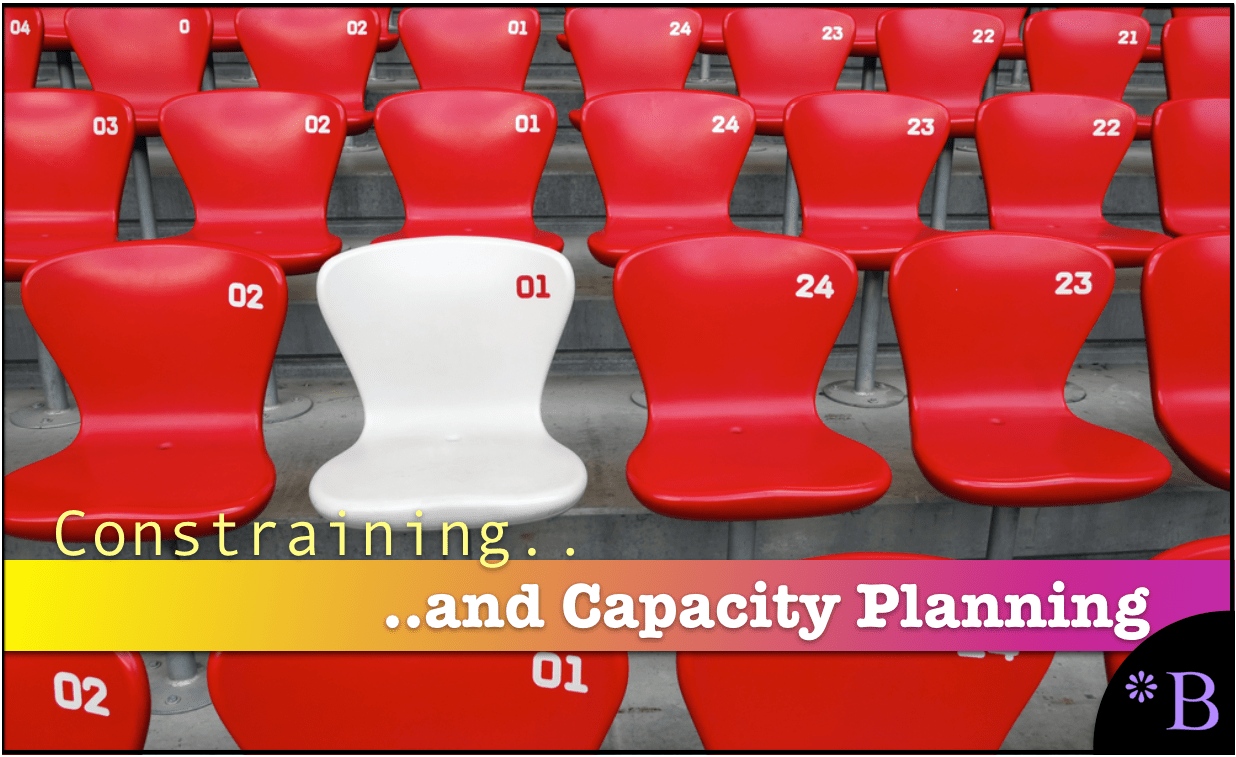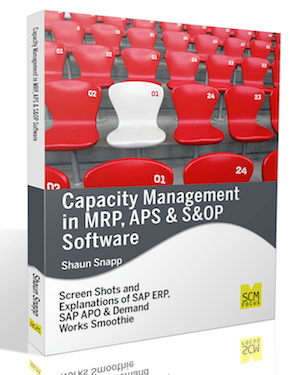
Capacity Planning + Management in MRP, APS & S&OP Software
What The Book Covers
Combining Two Types of Capacity Planning
This book is called capacity management because it encompasses two areas of planning that are usually discussed independently. Short-term capacity leveling or capacity constraining, which is the movement of demand to fit within the available supply and long-term capacity planning. This is the planning of long-term market demand to determine if the capacity should be changed.
Using Comparative Applications
In this book, both topics are covered, and they are included using multiple software applications to explain the concepts of capacity management. These are two closely related processes. However, they are often discussed separately. This book combines their explanation as well as their relationship to one another.
By reading this book, you will learn:
- How resources are modeled in capacity management systems.
- How the structured nature of capabilities leveling and constraining differs from capacity planning.
- How the various planning processes fit into one another, and where the gaps can be found.
- The time horizons of the capacity management process.
- How to improve capacity management at your company.
Buy Now
Chapters
- Chapter 1: Introduction
- Chapter 2: Capacity Leveling
- Chapter 3: Constraint-Based Planning
- Chapter 4: Resources
- Chapter 5: Forecast Consumption, Allocation, Scheduling Direction, and Timing
- Chapter 6: Capacity Planning with S&OP and the MPS
- Chapter 7: The Relationship Between Planning Systems and S&OP System
- Conclusion
Table of Contents
Chapter 1
Chapter 1: Introduction
- The Use of ScreenShots in the Book
- How Writing Bias is Controlled at Brightwork Research & Analysis and Brightwork Research & Analysis Press
- The Approach to the Book
- Important Terminology
- The Brightwork Research & Analysis Site
- Intended Audience
- Abbreviations
Chapter 2: Capacity Leveling
Chapter 3: Constraint-Based Planning
- Background
- The Types of Constraints Commonly Used by Supply Planning Systems
- How Supply Planning Resources Differ from Production Planning Resources
- Essential Considerations for Constraint-Based Systems
- Production Batch Sizes versus Full Resource Constraints
- Constraint-Based Planning in the Application
- Continuous versus Discrete Optimization
- The Challenges of Constraint-based Planning
- Conclusion
Chapter 4: Resources
- The Resource Types
- Production Batch Sizes versus Full Resource Constraints
- How Supply Planning Resources Differ from Production Planning Resources
- APO Resources in Detail
- Time Settings on the Resource
- Bucket versus Time Continuous Resources
- Mixed Resources
- Single (Activity) versus Multi (Activity) Resources
- Single-mixed or Multi-mixed Resources
- Resource Settings and What This Means for Time Continuous versus Bucket Planning
- The Time Orientation Flexibility of Capable to Match (CTM)
- The Conversion of SNP Planned Orders to PP/DS Planned Orders
- Storage Constraints
- Handling Resources and Location-to-Location Flow Constraints
- Transportation Constraints
- Resource Uptime
- Bottleneck Resources in Production Planning
- Background on Bottleneck Resources
- Bottleneck Resources in SAP APO
- When Multiple Resources Along a Production Line Must be Modeled
- The Production and Resource Scenarios
- Multiple Resource Constraints
- Hard versus Soft Constraints
- Finiteness Level of Resources
- Conclusion
Chapter 5: Forecast Consumption, Allocation, Consumption, Scheduling Direction, and Timings
- Backward and Forward Forecast Consumption
- The Example
- Implications to the Question of Backward Forecast Consumption
- Alternatives to Forecast Consumption
- Consumption in GATP
- Backward and Forward Production Scheduling
- Understanding the Primary Benefit of Forward Scheduling
- Scheduling Direction and Its Implications
- Backward and Forward Scheduling with Procurement and Stock Transfer Planning in SNP
- Forward Scheduling in the Deployment Planning Run: Push versus Pull Deployment
- Controlling the Application of Scheduling Direction to the Product-Location Combinations
- Forward Scheduling and Capacity Leveling
- Scheduling Direction and PP/DS
- Conclusion
Chapter 6: Capacity Planning with S&OP and the MPS
- Capacity Leveling, S&OP, and Aggregation
- The Pros and Cons of Detailed Planning
- Unconstrained Planning
- System Overlap and Planning Domain Expertise
- Research into Consensus-Based Forecasting by RAND
Chapter 7: The Relationship Between Planning Systems
Chapter 8: Conclusion

Buy Now
Questions about the Book?
Do you have any questions about the book? If so, please comment below, and we will address your questions.